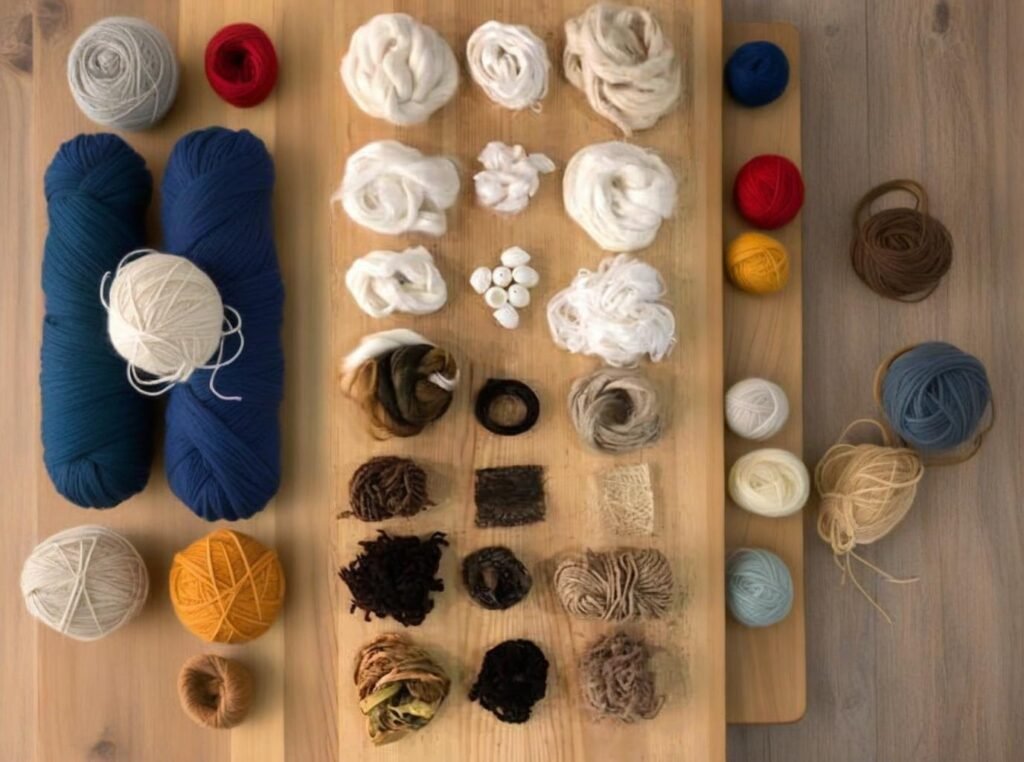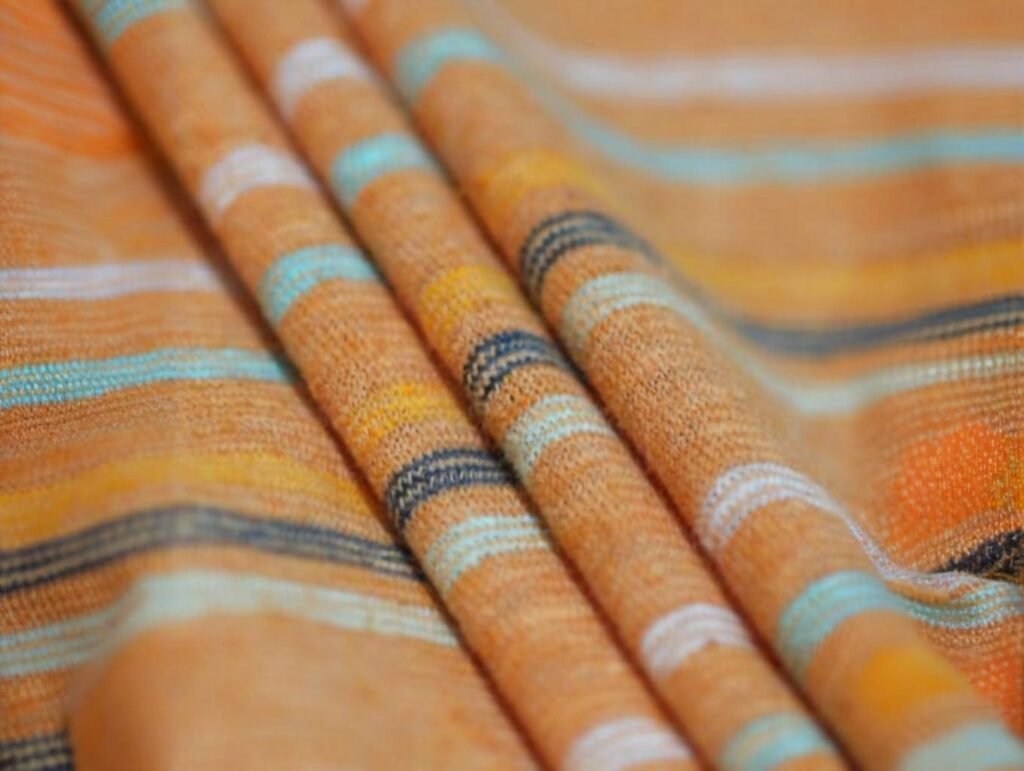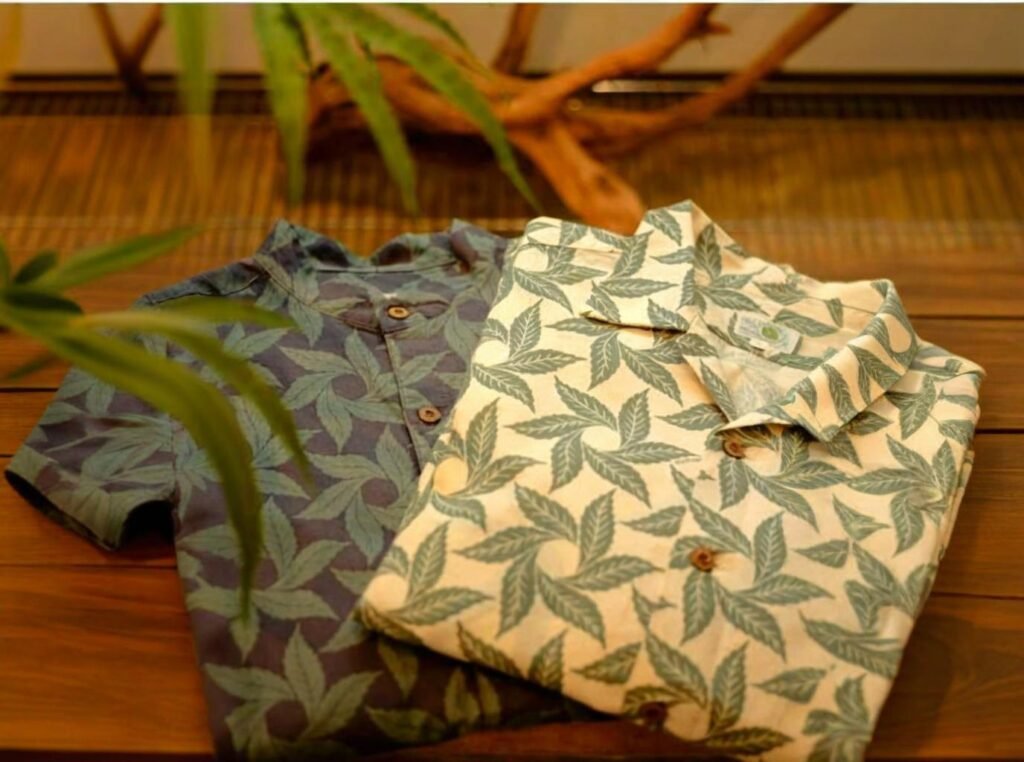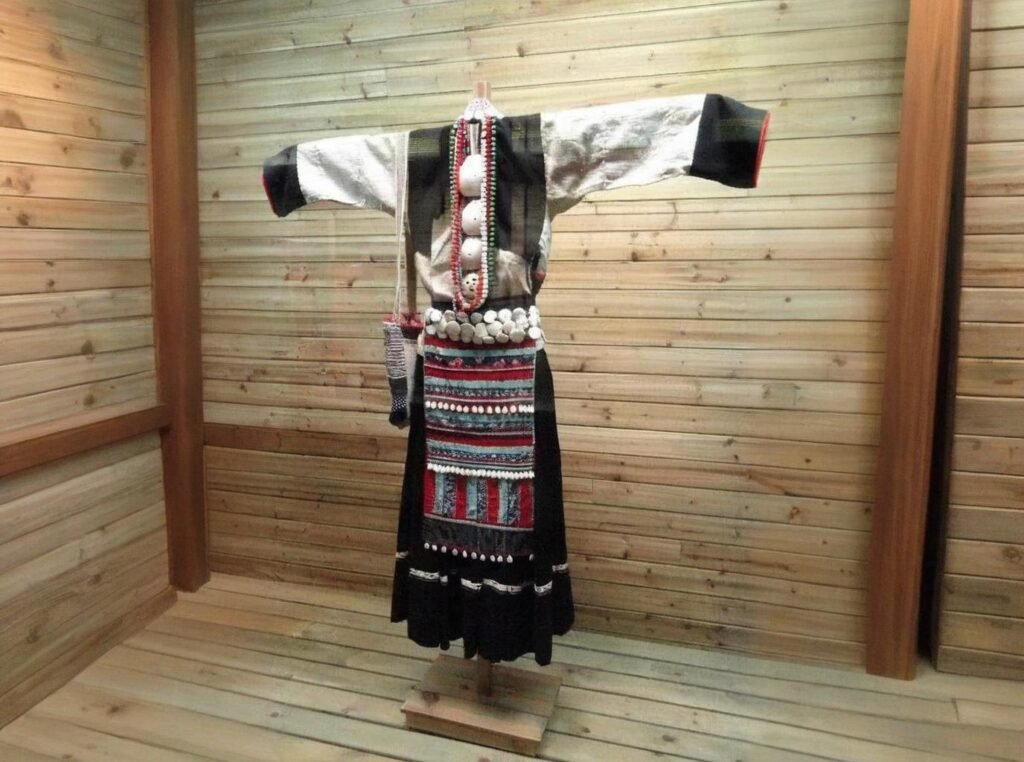
In a world racing toward net-zero goals, fashion and textile brands are under increasing pressure not just to “go green” in marketing, but to cut real emissions across their supply chains. For many B2B buyers and sustainability leads, Scope 3 emissions—those indirect emissions tied to suppliers and outsourced production—pose the biggest challenge. Unlike energy consumption or shipping, these emissions lie deep in the supply chain and are hard to trace or influence.
Hemp textiles offer a practical and measurable solution. From cultivation that actively sequesters carbon to low-impact processing and longer lifecycle durability, hemp enables companies to lower Scope 3 emissions significantly.
This article breaks down exactly how B2B brands can leverage hemp fabric to not only reduce carbon footprints but also earn credible carbon credits through recognized frameworks. You’ll learn where the savings come from, what documentation you need, and how to work with verified suppliers like SzoneierFabrics to develop your own Scope 3 reduction roadmap.
In 2023, a European sportswear brand working with a hemp-cotton blend from SzoneierFabrics reported a 19.6% reduction in Scope 3 emissions per unit, using third-party LCA data. Let’s explore how your brand can do the same—or even better.
What Are Scope 3 Emissions and Why Should Textile Companies Care?
Scope 3 emissions refer to all indirect emissions that occur throughout the value chain, including raw material extraction, manufacturing, logistics, product use, and end-of-life disposal. For textile companies, they often account for over 70% of total emissions.
As ESG regulations tighten—especially in the EU, UK, and California—brands must account for these emissions to comply with frameworks like the Corporate Sustainability Reporting Directive (CSRD) and GHG Protocol.
Understanding Scope 3 Categories in Textiles
1. Key Scope 3 Categories for Apparel Brands
| Category | Description | Example for Fashion Brands |
|---|---|---|
| Category 1: Purchased Goods | Emissions from raw materials | Hemp yarn, polyester filament |
| Category 4: Upstream Transport | Emissions from fabric shipping | China to EU container freight |
| Category 11: Use Phase | Washing/drying emissions | Consumer care cycle |
| Category 12: End-of-Life | Waste and landfill impact | Composting vs. incineration |
2. Scope 3 vs Scope 1 & 2
- Scope 1: Direct emissions from owned facilities (e.g., factory boilers)
- Scope 2: Purchased electricity
- Scope 3: Everything else—including outsourced manufacturing
3. Why It Matters
- Risk: Non-disclosure can trigger fines or investor distrust
- Reputation: Consumers and procurement teams are prioritizing verified reductions
- Revenue: Many public tenders and B2B partnerships now require Scope 3 data disclosure
A 2022 report by McKinsey found that brands that track Scope 3 emissions outperform competitors by 16% on ESG scores, helping them win supplier bids and B2B partnerships.
How Does Hemp Cultivation Help Sequester Carbon Compared to Conventional Fibers?

Hemp is one of the few natural fibers that actively removes carbon dioxide from the atmosphere during its growth phase. On average, one hectare of hemp can sequester 10–15 metric tons of CO₂—outperforming cotton, flax, and most trees on a per-acre basis.
Unlike cotton, which relies on intensive irrigation and fertilization, hemp thrives with minimal input and restores soil health—further enhancing its net carbon benefit.
Carbon Sequestration Metrics in Hemp vs. Other Crops
1. Carbon Absorption Rate Per Hectare
| Crop Type | CO₂ Sequestered (tons/hectare/year) | Water Use (liters/kg fiber) | Notes |
|---|---|---|---|
| Industrial Hemp | 10–15 | 300–500 | High cellulose, deep roots |
| Organic Cotton | 2–5 | 7,000–10,000 | Heavy water demand |
| Flax (Linen) | 2–4 | 1,200–1,700 | Seasonal cultivation limits |
| Bamboo (Textile) | 6–8 | 400–600 | May involve chemical pulping |
2. Lifecycle Emissions Comparison (Cradle-to-Gate)
A 2021 LCA conducted by Textile Exchange found:
- 100% hemp fabric emits 44% less CO₂-e per kg compared to organic cotton
- Hemp-cotton blend (70/30) reduces CO₂-e by 28% per unit compared to standard cotton
SzoneierFabrics sources hemp from certified organic farms in Yunnan, China, where rotation practices and minimal pesticide use contribute to a net-negative carbon score over the 3-year planting cycle.
3. Co-benefits of Hemp Cultivation
- Restores nitrogen to the soil
- Suppresses weeds naturally (less herbicide)
- Produces both textile fiber and biofuel-grade biomass
Which Stages of Hemp Textile Production Offer the Most Emission Reductions?
The stages of hemp textile production that offer the most emission reductions compared to conventional fibers are cultivation, degumming, and dyeing. These areas produce significantly lower greenhouse gas emissions due to reduced chemical usage, lower water consumption, and more energy-efficient processes.
Hemp’s natural characteristics—like its hollow core, high cellulose content, and quick growth—enable a streamlined production chain with fewer environmental penalties.
Emissions Breakdown by Stage in Hemp vs. Cotton
1. Lifecycle Stage Comparison (Per 1kg Finished Fabric)
| Production Stage | Organic Cotton (kg CO₂-e) | Industrial Hemp (kg CO₂-e) | % Reduction |
|---|---|---|---|
| Cultivation | 1.90 | 0.45 | 76% |
| Retting & Processing | 0.80 | 0.35 | 56% |
| Dyeing & Finishing | 1.60 | 0.90 | 44% |
| Total (cradle-to-gate) | 4.30 | 1.70 | 60% |
2022 Textile Exchange Comparative LCA
2. Key Emission-Saving Mechanisms
- Mechanical retting instead of chemical scouring
- Use of natural enzymes for degumming instead of caustic soda
- Compatibility with low-impact dyes
- Fast-drying properties reduce thermal energy demand
3. Real-World Example
SzoneierFabrics recently completed a hemp-knitted fabric program for a European athleisure brand. By switching from polyester-cotton blends to a hemp-bamboo-cotton composite, they recorded:
- 62% total emissions reduction per garment
- 8% lower manufacturing energy cost
- Ability to document Scope 3 savings for carbon disclosure to investors
Is Hemp-Based Fabric More Carbon-Efficient Than Cotton or Polyester?

Yes, hemp-based fabric is significantly more carbon-efficient than both cotton and polyester due to its lower resource requirements, superior carbon sequestration ability, and fewer processing chemicals.
Polyester, despite being cheap, carries a high carbon price—nearly three times that of hemp fabric—due to its fossil fuel origin and energy-intensive processing.
Carbon Intensity Comparison of Popular Fabrics
1. Cradle-to-Gate Carbon Footprint (per kg of woven fabric)
| Fabric Type | Average CO₂ Emissions (kg/kg) | Source |
|---|---|---|
| Polyester (PET) | 9.52 | Higg Index |
| Conventional Cotton | 5.90 | Cotton Inc. LCA |
| Organic Cotton | 4.30 | Textile Exchange LCA |
| Hemp (mechanical) | 1.70 | Textile Exchange LCA |
| Linen (flax) | 2.90 | European Confederation |
2. Blended Options for Cost + Carbon Efficiency
- 70% hemp / 30% organic cotton: great drape + 50% lower emissions
- 50% hemp / 50% bamboo viscose: 60% lower emissions + silky finish
- Hemp recycled poly blend: reduces virgin plastic + lowers impact
3. Energy Source Impact
Textile mills powered by renewables (solar/biomass) amplify hemp’s low footprint. SzoneierFabrics uses hybrid solar-electric setups, cutting operational CO₂ by 30%.
Hemp’s long fiber integrity means it can be recycled more times than cotton, making it ideal for circular fashion models aiming to report both Scope 3 and Scope 4 (avoided emissions) savings.
How Can B2B Buyers Claim Carbon Credits from Hemp Supply Chains?
B2B buyers can claim carbon credits from hemp textile production by working with certified suppliers, documenting lifecycle data through third-party LCAs, and participating in verified carbon offset programs such as Verra, Gold Standard, or Climate Action Reserve.
These credits can be applied toward Scope 3 emission reduction goals, especially under voluntary carbon markets or corporate sustainability disclosures.
Step-by-Step Process for Claiming Credits
1. Partner With Verified Hemp Suppliers
Look for suppliers that can:
- Provide cradle-to-gate LCA reports (e.g., ISO 14040-compliant)
- Prove regenerative farming practices
- Disclose energy usage during spinning and weaving
SzoneierFabrics, for example, works with certified organic hemp farms and provides emission data per batch using the Higg MSI and SimaPro.
2. Engage with Carbon Credit Programs
Carbon credit programs applicable to hemp textiles:
| Program | Type | Relevance to Hemp |
|---|---|---|
| Verra (VCS) | Voluntary | Bio-based sequestration |
| Gold Standard | Voluntary | LCA + social benefits combo |
| Climate Action Reserve | Regulated | Advanced bio-material credits |
| Nori | Marketplace | Farm-based sequestration |
3. Apply Emission Reductions Toward Reporting
- Report via CDP, GRI, or B-Corp standards
- Use credits to meet science-based targets
- Leverage credits to offset residual Scope 3 emissions in product categories like packaging or last-mile delivery
A 2022 pilot program by a U.S. outdoor apparel brand using Szoneier hemp fabrics secured 4,500 carbon offset units through a Gold Standard-verified hemp sourcing initiative—an achievement prominently featured in their ESG report.
What Certifications or Reporting Frameworks Support Scope 3 Emission Claims?

Certifications such as GOTS, OEKO-TEX, USDA Organic, and reporting frameworks like the GHG Protocol, CDP, and ISO 14067 support Scope 3 emission claims by providing verifiable, traceable environmental data from fiber sourcing to final product.
To ensure credibility, buyers must rely on third-party verified documentation aligned with these frameworks.
Key Certifications and What They Cover
1. Material-Level Certifications
| Certification | Scope | Value to B2B Buyers |
|---|---|---|
| GOTS | Organic processing | Verifies no synthetic inputs |
| OEKO-TEX Standard 100 | Chemical safety | Ensures no harmful residues |
| USDA Organic | Agricultural origin | Proof of pesticide-free hemp |
2. Carbon Reporting Frameworks
| Standard | Scope Covered | Hemp Application |
|---|---|---|
| GHG Protocol | Scope 1, 2, and 3 | Most widely accepted model |
| ISO 14067 | Product-level carbon data | Hemp t-shirt vs. cotton t-shirt |
| CDP (Carbon Disclosure Project) | Emissions transparency | Corporate-level disclosure |
3. How B2B Buyers Should Use This Data
- Request emission factor breakdowns from suppliers
- Match emissions data with input-output models
- Use data in LCAs, ESG dashboards, and green procurement audits
Brands using SzoneierFabrics’ verified Scope 3 data have integrated it into 10-K disclosures, investor presentations, and buyer scorecards—gaining visibility and credibility across international markets.
Do Hemp Textiles Qualify for Carbon Offset Programs or ESG Reporting?
Yes, hemp textiles qualify for both carbon offset programs and ESG reporting when the fiber is sourced sustainably, carbon sequestration is measurable, and third-party verification is in place. Hemp’s regenerative cultivation and low-emission processing make it eligible for credits in both voluntary and compliance carbon markets.
Because hemp contributes positively to carbon sinks and biodiversity, it is increasingly recognized in climate-aligned sourcing policies.
Integrating Hemp into Carbon + ESG Programs
1. Recognized Offset Categories Involving Hemp
| Offset Type | Program Examples | Hemp Application |
|---|---|---|
| Nature-Based Sequestration | Gold Standard, Nori | Captures CO₂ during growth |
| Regenerative Agriculture | Verra, Regen Network | Restores soil, lowers emissions |
| Bio-based Manufacturing | Climate Action Reserve | Credits for low-emission processing |
2. Common ESG Metrics Where Hemp Excels
| ESG Reporting Area | Metric | Hemp’s Role |
|---|---|---|
| Environmental (E) | CO₂ emissions/kg fabric | 60–70% less than cotton/poly |
| Social (S) | Fair labor, community farming | Rural job creation in China |
| Governance (G) | Supply chain traceability | Supports blockchain integration |
3. Hemp in ESG-Focused Portfolios
In 2023, a leading sustainable yoga apparel brand included hemp-based products in its GRI-certified ESG portfolio, earning investor interest and qualifying for green funding under EU Taxonomy regulations.
SzoneierFabrics supported the project with Scope 3 data, regenerative farm certificates, and processing emissions benchmarks—all verified under ISO 14067 standards.
What Should Brands Ask Hemp Fabric Suppliers to Validate Emission Reductions?

Brands should ask hemp fabric suppliers for transparent lifecycle assessments (LCAs), carbon footprint data, third-party certification, traceable farm origins, and sustainability audit reports. These materials help validate emission reductions and ensure Scope 3 compliance.
Transparency is critical—without validated data, brands cannot ethically or legally report reductions.
A Supplier Due Diligence Checklist
1. Key Documents to Request
| Document Type | Purpose | Who Issues It |
|---|---|---|
| LCA Report | Emissions from cradle to gate | Third-party LCA labs |
| Farm Certification | Organic/regenerative proof | USDA, EU Organic, China Organic |
| Emission Factors Table | Breakdown of each process’s emissions | Internal (verified) |
| Fiber Traceability | Origin data for the hemp crop | Supplier or audit firm |
| Audit Reports | Environmental & social performance | Sedex, BSCI, WRAP |
2. Sample Questions to Ask Hemp Suppliers
- Is your hemp fiber certified organic or regenerative?
- Do you have Scope 3-ready LCA data for each fabric style?
- Can you share your dyeing and finishing emission metrics?
- What tools do you use for emissions tracking (e.g., Higg MSI)?
- Have your processes been verified under ISO 14067?
Brands sourcing from SzoneierFabrics receive a full “Carbon Disclosure Package” that includes an editable LCA report, emissions calculation template, and up-to-date farm traceability documentation—ready for investor reports or carbon audits.
Build Your Scope 3 Strategy with SzoneierFabrics
As global sustainability benchmarks tighten, Scope 3 emissions are no longer optional—they’re the most significant frontier in carbon reduction. Hemp textile production provides a real, measurable way for fashion and home brands to shrink their environmental footprint, earn carbon credits, and report ESG progress with confidence.
SzoneierFabrics is a trusted Chinese manufacturer with years of experience developing custom hemp fabrics for global buyers. From organic hemp jersey to woven hemp-linen blends, we offer fast sampling, low MOQs, and complete emission documentation—backed by certifications and transparent supply chain data.
Ready to Cut Scope 3 Emissions?
Contact SzoneierFabrics today to request free hemp samples, review LCA reports, and customize carbon-reducing fabric solutions for your business.

